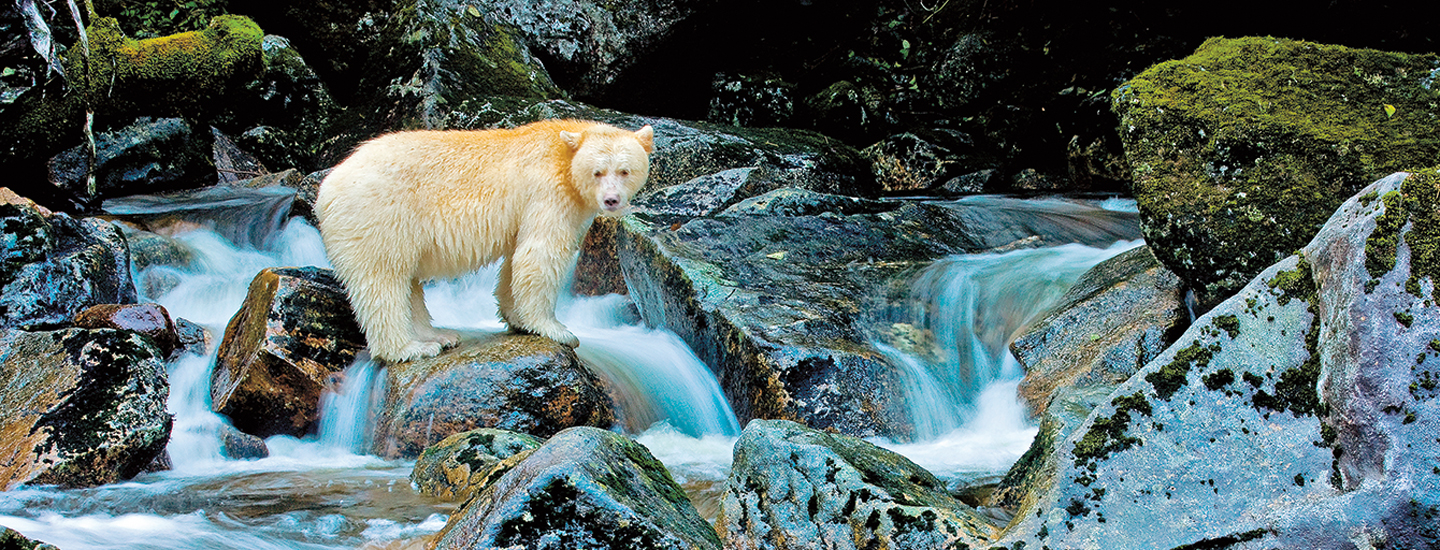On a riverbank in western Canada, a pale white bear hunts for fish. But this animal isn’t a polar bear. It’s a black bear born with a rare cream-colored coat. The native people of western Canada call these ghostly animals spirit bears.
Spirit bears are considered the rarest bears on Earth. There are only about 400 in the wild. Most live in a remote area of Canada called the Great Bear Rainforest (see Coastal Home). It’s the largest temperate rainforest in the world.
Scientists are tracking spirit bears to better understand their life in this isolated habitat. “It is a peek into the world of these amazing animals that very few people get to see,” says Christina Service. She’s a scientist with the Spirit Bear Research Foundation based in Klemtu, British Columbia.
Scientists like Service have partners in studying bears. The Kitasoo/Xai’xais (kit-AH-soo/hiy-hiyss) people are indigenous to this area of Canada. They’ve shared the region with bears for thousands of years and consider spirit bears sacred. They work with scientists to protect the animals and the rainforest they call home.
A pale white bear stands on a riverbank in western Canada. It’s hunting for fish. But this animal isn’t a polar bear. It’s a black bear. It was born with a rare cream-colored coat. Local native people call these ghostly animals spirit bears.
Spirit bears are thought to be the rarest bears on Earth. There are only about 400 in the wild. Most live in a remote area of Canada. It’s called the Great Bear Rainforest (see Coastal Home). It’s the largest temperate rainforest in the world.
Scientists are tracking spirit bears. They want to learn about their life in this special place. “It is a peek into the world of these amazing animals that very few people get to see,” says Christina Service. She’s a scientist with the Spirit Bear Research Foundation. It’s based in Klemtu, British Columbia.
Scientists like Service have partners in studying bears. They are the Kitasoo/Xai’xais (kit-AH-soo/hiy-hiyss) people. They’re indigenous to this part of Canada. They’ve shared the area with bears for thousands of years. They believe spirit bears are sacred. They work with scientists to protect the animals. They also protect the rainforest the bears call home.

